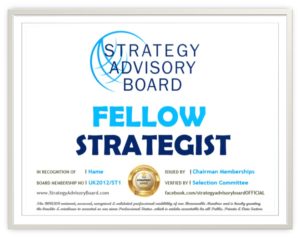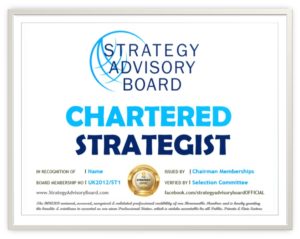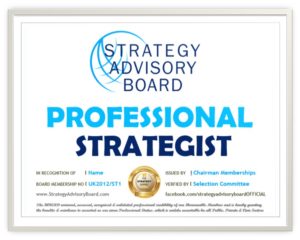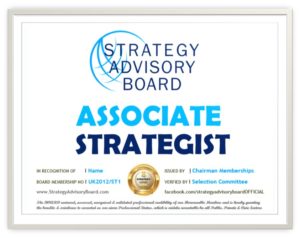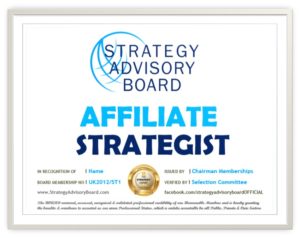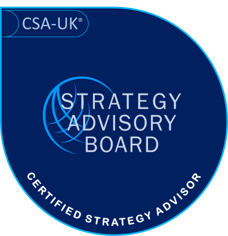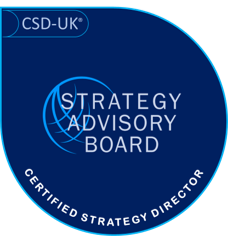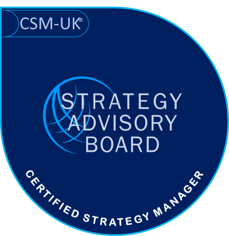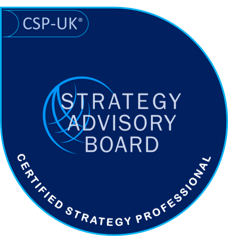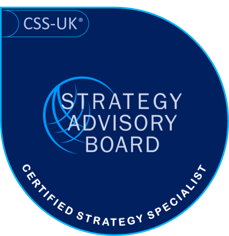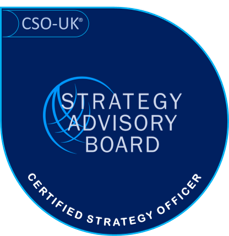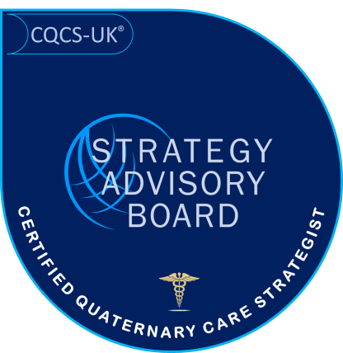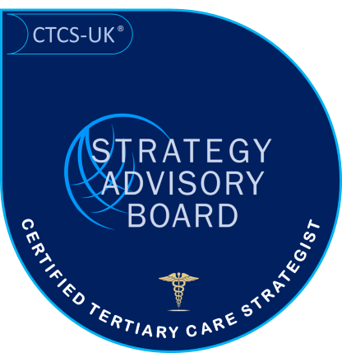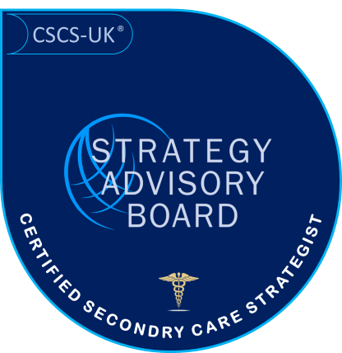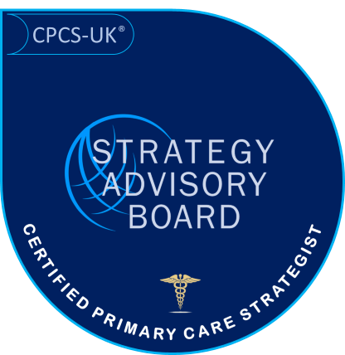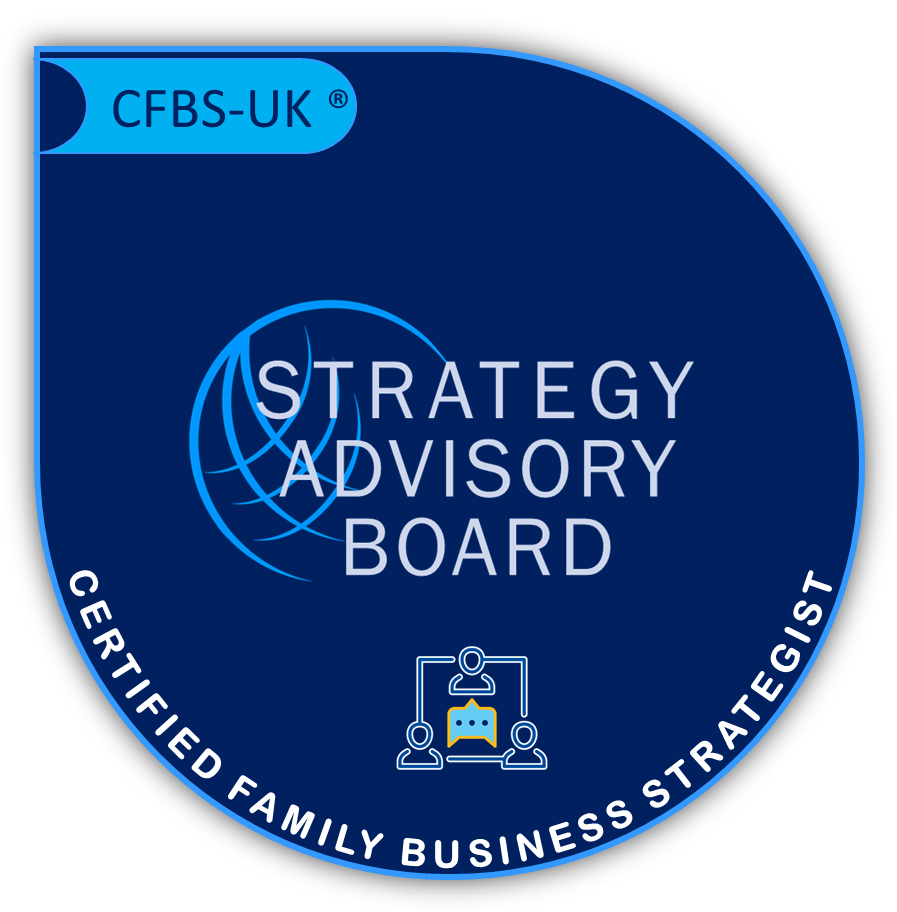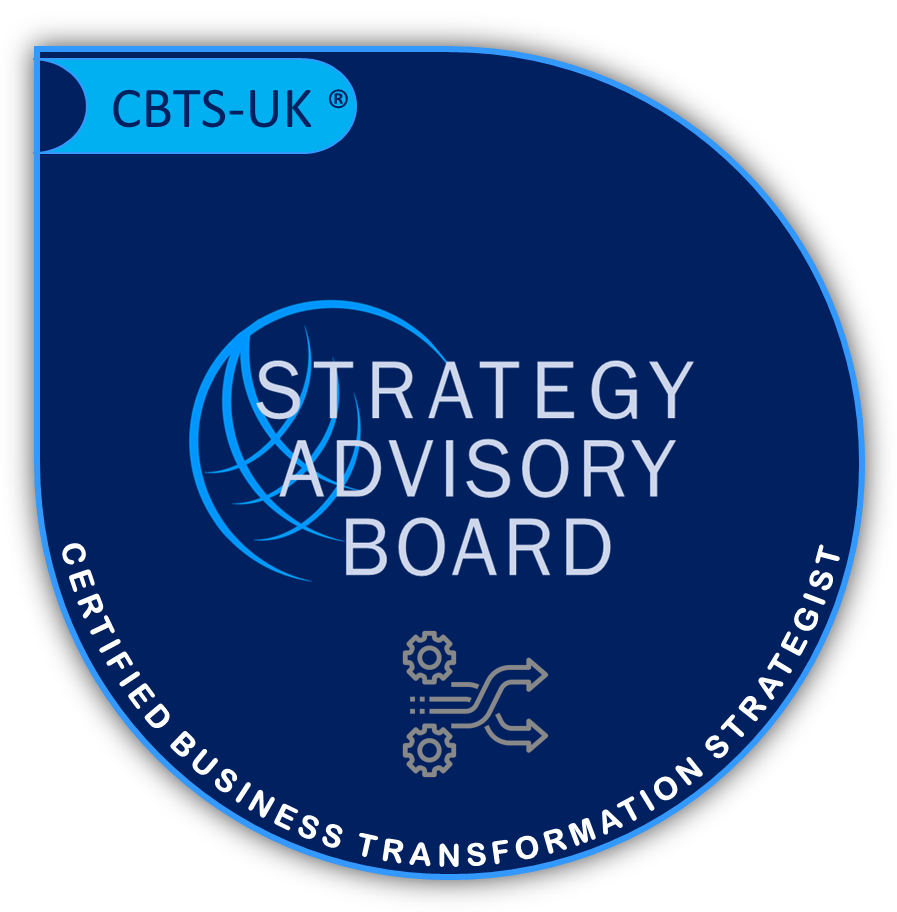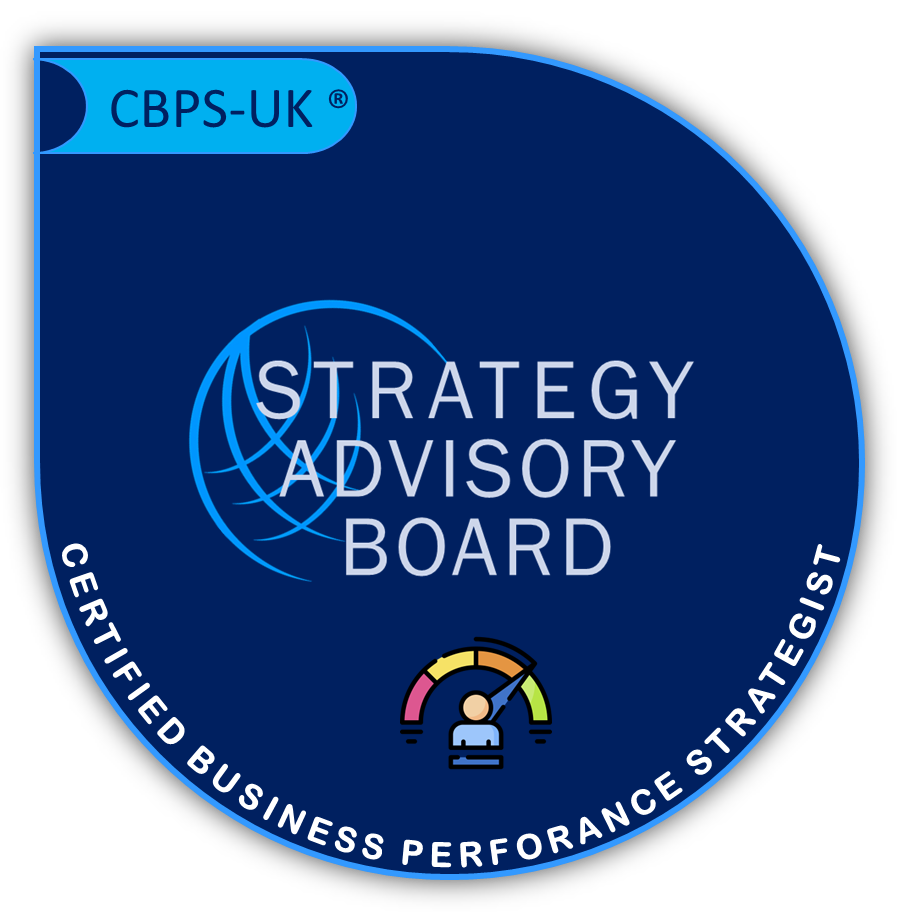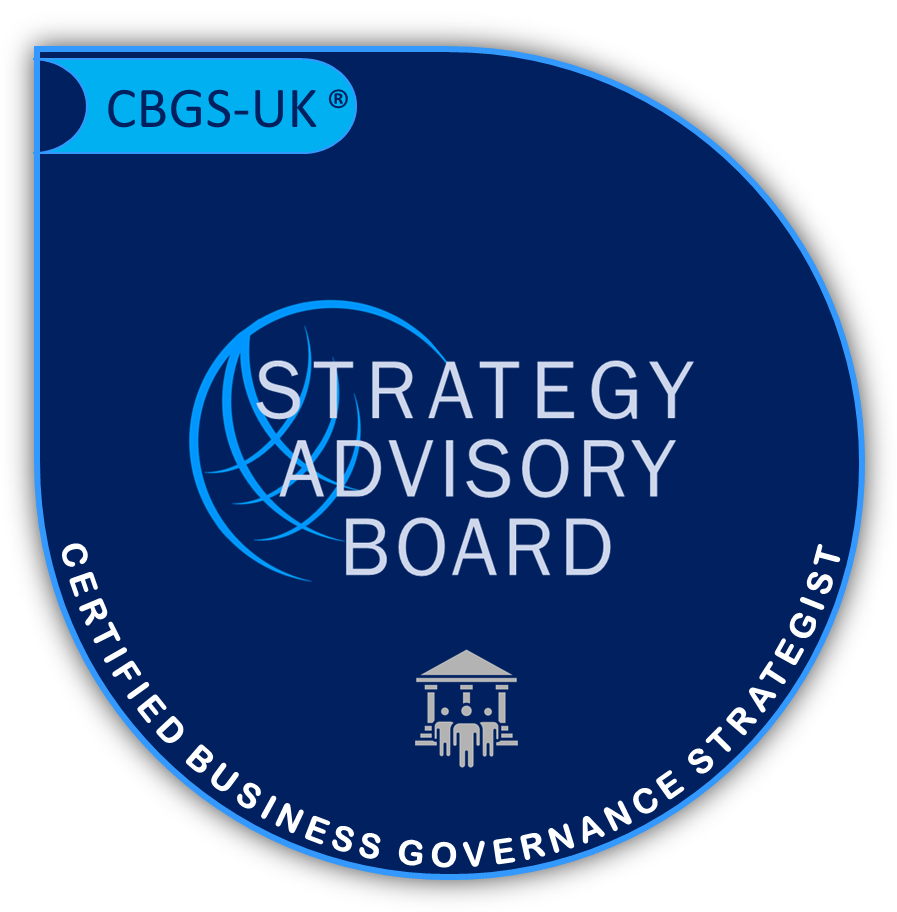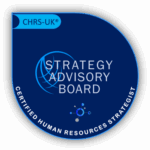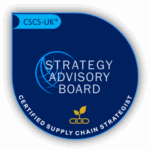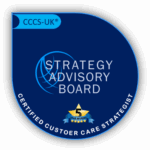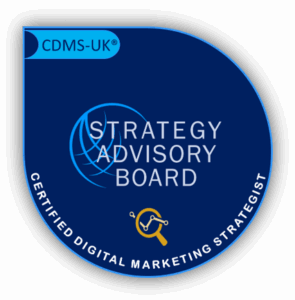Strategic Business Plan
The real value of creating a business plan is not in having the finished product in hand; rather, the value lies in the process of researching and thinking about your business in a systematic way. The act of planning helps you to think things through thoroughly, study and research if you are not sure of the facts, and look at your ideas critically. It takes time now, but avoids costly, perhaps disastrous, mistakes later.
The business plan is a generic model suitable for all types of businesses. However, you should modify it to suit your particular circumstances. Before you begin, review the section titled Refining the Plan, found at the end. It suggests emphasizing certain areas depending upon your type of business (manufacturing, retail, service, etc.). It also has tips for fine-tuning your plan to make an effective presentation to investors or bankers. If this is why you’re creating your plan, pay particular attention to your writing style. You will be judged by the quality and appearance of your work as well as by your ideas.
It typically takes several weeks to complete a good plan. Most of that time is spent in research and re-thinking your ideas and assumptions. But then, that’s the value of the process. So make time to do the job properly. Those who do never regret the effort. And finally, be sure to keep detailed notes on your sources of information and on the assumptions underlying your financial data.
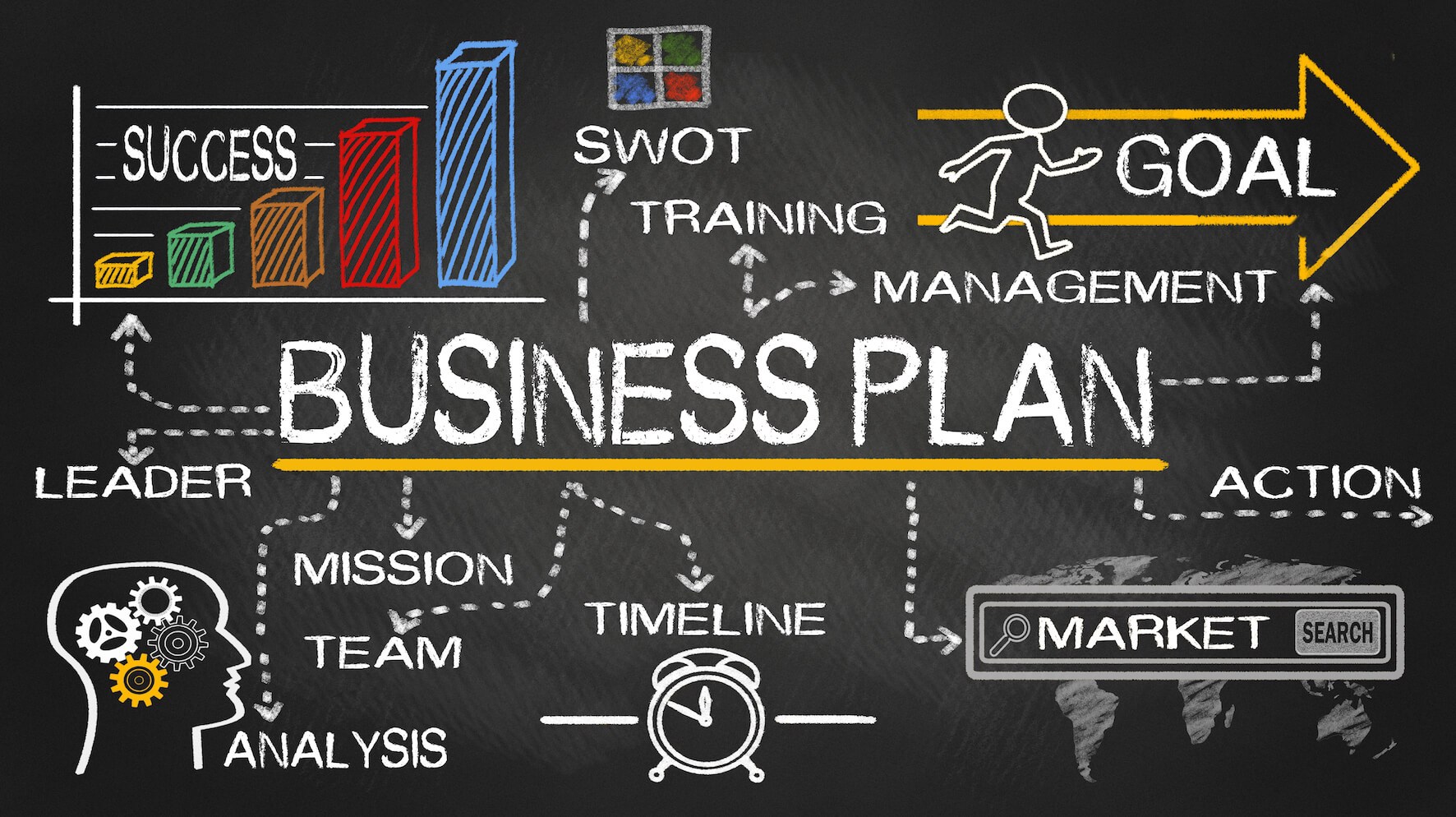
Step 1: Do Your Fair Share of Research
The first part of the business plan strategy is the longest and most exhausting of them all. It will take most of the time spent on your company’s business plan creation, but if you dedicate enough effort to it, you can create an excellent strategy for success.
Start by researching the market, the competition, as well as your product. Evaluate the expenses, both expected and unexpected, and perform a comprehensive research of everything you need to know about the industry you are getting into.
Step 2: Find a Purpose for Your Plan
What’s the goal of your business plan? There are many purposes and goals a plan can aim to fulfill, but one of them is the key goal your entire business will be striving to reach.
Look at your plan as a road map that will direct the actions of your business. That being said, you need to find a sole, most important purpose for your plan and make it as clear as possible. Only then you can define the rest of the goals.
Step 3: Create a Company Profile
This profile will combine the product and services offered by your company, the history of the company as an organization, information about the target audience, your plans and goals, as well as business’ unique characteristics. All of this information goes on the About Us page on your business’ website.
Step 4: Include a Marketing Plan
A good business plan cannot be successful without a marketing plan, a strategy in place. Such plan should combine the following objectives:
- Improve the existing products or extend their market
- Create and introduce a new product
- Spread your company on different territories
- Cross-sell different product
- Find a way to raise the prices without losing customers
- Find great, long-term clients and build a relationship with them
- Create quality content to promote your business
Step 5: Document Everything
When reading your business plan, investors expect to learn details about your business, the achievements, as well as the plans for the future. To aid this process and get more investors on board, document everything. Under everything we mean cash flow, expenses, as well as industry projections.
Step 6: Adapt Everything to Your Audience
In most cases, your business plan will have the aim to impress investors. Take this into account when preparing the plan. Learn what the audience is interested in and what would attract more investors.
Step 7: Review and Edit
The final step of every written piece, especially the professional pieces such as a business plan, is to edit and review. This might be your only chance to impress a group of investors and build your business, which makes it critical for you to check the plan and make sure it is perfect. If you fail to do so, you risk seeming unprofessional and uncaring in the eyes of those you want to impress.
In order to win the backing of the target investors, you need to make sure that your plan is perfect. Look at it several times before sharing it with others. Search for mistaken words or phrases, wrong dates or numbers, spelling and grammar errors, etc. Ensure that your formatting looks professional, but most importantly, make sure that your plan is clear, concise, and convincing.
Finally, review the plan to see if it fits all the steps in this list. Once you are done doing so, your business plan is ready!
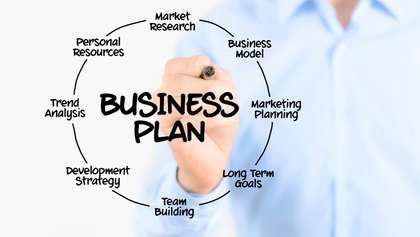
Components of Strategic Business Plan
1. Executive Summary
Your executive summary should appear first in your business plan. It should summarize what you expect your business to accomplish. Since it’s meant to highlight what you intend to discuss in the rest of the plan, the Small Business Administration suggests that you write this section last.
A good executive summary is compelling. It reveals the company’s mission statement, along with a short description of its products and services. It might also be a good idea to briefly explain why you’re starting your company and include details about your experience in the industry you’re entering.
2. Company Description
The next section that should appear in your business plan is a company description. It’s best to include key information about your business, your goals and the customers you plan to serve.
Your company description should also discuss how your business will stand out from others in the industry and how the products and services you’re providing will be helpful to your target audience.
3. Market Analysis
Ideally, your market analysis will show that you know the ins and outs of the industry and the specific market you’re planning to enter. In that section, you’ll need to use data and statistics to talk about where the market has been, where it’s expected to go and how your company will fit into it. In addition, you’ll have to provide details about the consumers you’ll be marketing to, such as their income levels.
4. Competitive Analysis
A good business plan will present a clear comparison of your business to your direct and indirect competitors. You’ll need to show that you know their strengths and weaknesses and you know how your business will stack up. If there are any issues that could prevent you from jumping into the market, like high upfront costs, it’s best to say so. This information will go in your market analysis section.
5. Description of Management and Organization
Following your market analysis, your business plan will outline the way that your organization will be set up. You’ll introduce your company managers and summarize their skills and primary job responsibilities. If you want to, you can create a diagram that maps out your chain of command.
Don’t forget to indicate whether your business will operate as a partnership, a sole proprietorship or a business with a different ownership structure. If you have a board of directors, you’ll need to identify the members.
6. Breakdown of Your Products and Services
If you didn’t incorporate enough facts about your products and services into your company description (since that section is meant to be an overview), it might be a good idea to include extra information about them in a separate section. Whoever’s reading this portion of your business plan should know exactly what you’re planning to create and sell, how long your products are supposed to last and how they’ll meet an existing need.
It’s a good idea to mention your suppliers, too. If you know how much it’ll cost to make your products and how much money you’re hoping to bring in, those are great details to add. You’ll need to list anything related to patents and copyright concerns as well.
7. Marketing Plan
In your business plan, it’s important to describe how you intend to get your products and services in front of potential clients. That’s what marketing is all about. As you pinpoint the steps you’re going to take to promote your products, you’ll need to mention the budget you’ll need to implement your strategies.
8. Sales Strategy
How will you sell the products you’re building? That’s the most important question you’ll answer when you discuss your sales strategy. It’s best to be as specific as possible. It’s a good idea to throw in the number of sales reps you’re planning to hire and how you’ll go about finding them and bringing them on board. You can also include sales targets.
9. Request for Funding
If you need funding, you can devote an entire section to talking about the amount of money you need and how you plan to use the capital you’re trying to raise. If you’ll need extra cash in a year or two to complete a certain project, that’s something that’s important to disclose.
10. Financial Projections
In the final section of your business plan, you’ll reveal the financial goals and expectations that you’ve set based on market research. You’ll report your anticipated revenue for the first 12 months and your annual projected earnings for the second, third, fourth and fifth years of business.
If you’re trying to apply for a personal loan or a small business loan, you can always add an appendix or another section that provides additional financial or background information.
The Bottom Line
Every company is different so your business plan might look nothing like another entrepreneur’s. But there are key components that every good plan needs to have, and it’s always a good idea to provide a clear and accurate summary of your business goals in your business plan.
Within the overall outline of the business plan, the executive summary will follow the title page. The summary should tell the reader what you want. This is very important. All too often, what the business owner desires is buried on page eight. Clearly state what you’re asking for in the summary.
The statement should be kept short and businesslike, probably no more than half a page. It could be longer, depending on how complicated the use of funds may be, but the summary of a business plan, like the summary of a loan application, is generally no longer than one page. Within that space, you’ll need to provide a synopsis of your entire business plan. Key elements that should be included are:
- Business concept. Describes the business, its product and the market it will serve. It should point out just exactly what will be sold, to whom and why the business will hold a competitive advantage.
- Financial features. Highlights the important financial points of the business including sales, profits, cash flows and return on investment.
- Financial requirements. Clearly states the capital needed to start the business and to expand. It should detail how the capital will be used, and the equity, if any, that will be provided for funding. If the loan for initial capital will be based on security instead of equity, you should also specify the source of collateral.
- Current business position. Furnishes relevant information about the company, its legal form of operation, when it was formed, the principal owners and key personnel.
- Major achievements. Details any developments within the company that are essential to the success of the business. Major achievements include items like patents, prototypes, location of a facility, any crucial contracts that need to be in place for product development, or results from any test marketing that has been conducted.
When writing your statement of purpose, don’t waste words. If the statement of purpose is eight pages, nobody’s going to read it because it’ll be very clear that the business, no matter what its merits, won’t be a good investment because the principals are indecisive and don’t really know what they want. Make it easy for the reader to realize at first glance both your needs and capabilities.
Business Description
Tell Them All About It
The business description usually begins with a short description of the industry. When describing the industry, discuss the present outlook as well as future possibilities. You should also provide information on all the various markets within the industry, including any new products or developments that will benefit or adversely affect your business. Base all of your observations on reliable data and be sure to footnote sources of information as appropriate. This is important if you’re seeking funding; the investor will want to know just how dependable your information is, and won’t risk money on assumptions or conjecture.
When describing your business, the first thing you need to concentrate on is its structure. By structure we mean the type of operation, i.e. wholesale, retail, food service, manufacturing or service-oriented. Also state whether the business is new or already established.
In addition to structure, legal form should be reiterated once again. Detail whether the business is a sole proprietorship, partnership or corporation, who its principals are, and what they will bring to the business.
You should also mention who you will sell to, how the product will be distributed, and the business’s support systems. Support may come in the form of advertising, promotions and customer service.
Once you’ve described the business, you need to describe the products or services you intend to market. The product description statement should be complete enough to give the reader a clear idea of your intentions. You may want to emphasize any unique features or variations from concepts that can typically be found in the industry.
Be specific in showing how you will give your business a competitive edge. For example, your business will be better because you will supply a full line of products; competitor A doesn’t have a full line. You’re going to provide service after the sale; competitor B doesn’t support anything he sells. Your merchandise will be of higher quality. You’ll give a money-back guarantee. Competitor C has the reputation for selling the best French fries in town; you’re going to sell the best Thousand Island dressing.
How Will I Profit?
Now you must be a classic capitalist and ask yourself, “How can I turn a buck? And why do I think I can make a profit that way?” Answer that question for yourself, and then convey that answer to others in the business concept section. You don’t have to write 25 pages on why your business will be profitable. Just explain the factors you think will make it successful, like the following: it’s a well-organized business, it will have state-of-the-art equipment, its location is exceptional, the market is ready for it, and it’s a dynamite product at a fair price.
If you’re using your business plan as a document for financial purposes, explain why the added equity or debt money is going to make your business more profitable.
Show how you will expand your business or be able to create something by using that money.
Show why your business is going to be profitable. A potential lender is going to want to know how successful you’re going to be in this particular business. Factors that support your claims for success can be mentioned briefly; they will be detailed later. Give the reader an idea of the experience of the other key people in the business. They’ll want to know what suppliers or experts you’ve spoken to about your business and their response to your idea. They may even ask you to clarify your choice of location or reasons for selling this particular product.
The business description can be a few paragraphs in length to a few pages, depending on the complexity of your plan. If your plan isn’t too complicated, keep your business description short, describing the industry in one paragraph, the product in another, and the business and its success factors in three or four paragraphs that will end the statement.
While you may need to have a lengthy business description in some cases, it’s our opinion that a short statement conveys the required information in a much more effective manner. It doesn’t attempt to hold the reader’s attention for an extended period of time, and this is important if you’re presenting to a potential investor who will have other plans he or she will need to read as well. If the business description is long and drawn-out, you’ll lose the reader’s attention, and possibly any chance of receiving the necessary funding for the project.
Market Strategies
Define Your Market
Market strategies are the result of a meticulous market analysis. A market analysis forces the entrepreneur to become familiar with all aspects of the market so that the target market can be defined and the company can be positioned in order to garner its share of sales. A market analysis also enables the entrepreneur to establish pricing, distribution and promotional strategies that will allow the company to become profitable within a competitive environment. In addition, it provides an indication of the growth potential within the industry, and this will allow you to develop your own estimates for the future of your business.
Begin your market analysis by defining the market in terms of size, structure, growth prospects, trends and sales potential.
The total aggregate sales of your competitors will provide you with a fairly accurate estimate of the total potential market. Once the size of the market has been determined, the next step is to define the target market. The target market narrows down the total market by concentrating on segmentation factors that will determine the total addressable market–the total number of users within the sphere of the business’s influence. The segmentation factors can be geographic, customer attributes or product-oriented.
For instance, if the distribution of your product is confined to a specific geographic area, then you want to further define the target market to reflect the number of users or sales of that product within that geographic segment.
Once the target market has been detailed, it needs to be further defined to determine the total feasible market. This can be done in several ways, but most professional planners will delineate the feasible market by concentrating on product segmentation factors that may produce gaps within the market. In the case of a microbrewery that plans to brew a premium lager beer, the total feasible market could be defined by determining how many drinkers of premium pilsner beers there are in the target market.
It’s important to understand that the total feasible market is the portion of the market that can be captured provided every condition within the environment is perfect and there is very little competition. In most industries this is simply not the case. There are other factors that will affect the share of the feasible market a business can reasonably obtain. These factors are usually tied to the structure of the industry, the impact of competition, strategies for market penetration and continued growth, and the amount of capital the business is willing to spend in order to increase its market share.
Projecting Market Share
Arriving at a projection of the market share for a business plan is very much a subjective estimate. It’s based on not only an analysis of the market but on highly targeted and competitive distribution, pricing and promotional strategies. For instance, even though there may be a sizable number of premium pilsner drinkers to form the total feasible market, you need to be able to reach them through your distribution network at a price point that’s competitive, and then you have to let them know it’s available and where they can buy it. How effectively you can achieve your distribution, pricing and promotional goals determines the extent to which you will be able to garner market share.
For a business plan, you must be able to estimate market share for the time period the plan will cover. In order to project market share over the time frame of the business plan, you’ll need to consider two factors:
- Industry growth which will increase the total number of users. Most projections utilize a minimum of two growth models by defining different industry sales scenarios. The industry sales scenarios should be based on leading indicators of industry sales, which will most likely include industry sales, industry segment sales, demographic data and historical precedence.
- Conversion of users from the total feasible market. This is based on a sales cycle similar to a product life cycle where you have five distinct stages: early pioneer users, early users, early majority users, late majority users and late users. Using conversion rates, market growth will continue to increase your market share during the period from early pioneers to early majority users, level off through late majority users, and decline with late users.
Defining the market is STEP one in your analysis. With the information you’ve gained through market research, you need to develop strategies that will allow you to fulfill your objectives.
Positioning Your Business
When discussing market strategy, it’s inevitable that positioning will be brought up. A company’s positioning strategy is affected by a number of variables that are closely tied to the motivations and requirements of target customers within as well as the actions of primary competitors.
Before a product can be positioned, you need to answer several strategic questions such as:
- How are your competitors positioning themselves?
- What specific attributes does your product have that your competitors’ don’t?
- What customer needs does your product fulfill?
Once you’ve answered your strategic questions based on research of the market, you can then begin to develop your positioning strategy and illustrate that in your business plan. A positioning statement for a business plan doesn’t have to be long or elaborate. It should merely point out exactly how you want your product perceived by both customers and the competition.
Pricing
How you price your product is important because it will have a direct effect on the success of your business. Though pricing strategy and computations can be complex, the basic rules of pricing are straightforward:
- All prices must cover costs.
- The best and most effective way of lowering your sales prices is to lower costs.
- Your prices must reflect the dynamics of cost, demand, changes in the market and response to your competition.
- Prices must be established to assure sales. Don’t price against a competitive operation alone. Rather, price to sell.
- Product utility, longevity, maintenance and end use must be judged continually, and target prices adjusted accordingly.
- Prices must be set to preserve order in the marketplace.
There are many methods of establishing prices available to you:
- Cost-plus pricing. Used mainly by manufacturers, cost-plus pricing assures that all costs, both fixed and variable, are covered and the desired profit percentage is attained.
- Demand pricing. Used by companies that sell their product through a variety of sources at differing prices based on demand.
- Competitive pricing. Used by companies that are entering a market where there is already an established price and it is difficult to differentiate one product from another.
- Markup pricing. Used mainly by retailers, markup pricing is calculated by adding your desired profit to the cost of the product. Each method listed above has its strengths and weaknesses.
Distribution
Distribution includes the entire process of moving the product from the factory to the end user. The type of distribution network you choose will depend upon the industry and the size of the market. A good way to make your decision is to analyze your competitors to determine the channels they are using, then decide whether to use the same type of channel or an alternative that may provide you with a strategic advantage.
Some of the more common distribution channels include:
- Direct sales. The most effective distribution channel is to sell directly to the end-user.
- OEM (original equipment manufacturer) sales. When your product is sold to the OEM, it is incorporated into their finished product and it is distributed to the end user.
- Manufacturer’s representatives. One of the best ways to distribute a product, manufacturer’s reps, as they are known, are salespeople who operate out of agencies that handle an assortment of complementary products and divide their selling time among them.
- Wholesale distributors. Using this channel, a manufacturer sells to a wholesaler, who in turn sells it to a retailer or other agent for further distribution through the channel until it reaches the end user.
- Brokers. Third-party distributors who often buy directly from the distributor or wholesaler and sell to retailers or end users.
- Retail distributors. Distributing a product through this channel is important if the end user of your product is the general consuming public.
- Direct Mail. Selling to the end user using a direct mail campaign.
As we’ve mentioned already, the distribution strategy you choose for your product will be based on several factors that include the channels being used by your competition, your pricing strategy and your own internal resources.
Promotion Plan
With a distribution strategy formed, you must develop a promotion plan. The promotion strategy in its most basic form is the controlled distribution of communication designed to sell your product or service. In order to accomplish this, the promotion strategy encompasses every marketing tool utilized in the communication effort. This includes:
- Advertising. Includes the advertising budget, creative message(s), and at least the first quarter’s media schedule.
- Packaging. Provides a description of the packaging strategy. If available, mockups of any labels, trademarks or service marks should be included.
- Public relations. A complete account of the publicity strategy including a list of media that will be approached as well as a schedule of planned events.
- Sales promotions. Establishes the strategies used to support the sales message. This includes a description of collateral marketing material as well as a schedule of planned promotional activities such as special sales, coupons, contests and premium awards.
- Personal sales. An outline of the sales strategy including pricing procedures, returns and adjustment rules, sales presentation methods, lead generation, customer service policies, salesperson compensation, and salesperson market responsibilities.
Sales Potential
Once the market has been researched and analyzed, conclusions need to be developed that will supply a quantitative outlook concerning the potential of the business. The first financial projection within the business plan must be formed utilizing the information drawn from defining the market, positioning the product, pricing, distribution, and strategies for sales. The sales or revenue model charts the potential for the product, as well as the business, over a set period of time. Most business plans will project revenue for up to three years, although five-year projections are becoming increasingly popular among lenders.
When developing the revenue model for the business plan, the equation used to project sales is fairly simple. It consists of the total number of customers and the average revenue from each customer. In the equation, “T” represents the total number of people, “A” represents the average revenue per customer, and “S” represents the sales projection. The equation for projecting sales is: (T)(A) = S
Using this equation, the annual sales for each year projected within the business plan can be developed. Of course, there are other factors that you’ll need to evaluate from the revenue model. Since the revenue model is a table illustrating the source for all income, every segment of the target market that is treated differently must be accounted for. In order to determine any differences, the various strategies utilized in order to sell the product have to be considered. As we’ve already mentioned, those strategies include distribution, pricing and promotion.
Competitive Analysis
Identify and Analyze Your Competition
The competitive analysis is a statement of the business strategy and how it relates to the competition. The purpose of the competitive analysis is to determine the strengths and weaknesses of the competitors within your market, strategies that will provide you with a distinct advantage, the barriers that can be developed in order to prevent competition from entering your market, and any weaknesses that can be exploited within the product development cycle.
The first step in a competitor analysis is to identify the current and potential competition. There are essentially two ways you can identify competitors. The first is to look at the market from the customer’s viewpoint and group all your competitors by the degree to which they contend for the buyer’s dollar. The second method is to group competitors according to their various competitive strategies so you understand what motivates them.
Once you’ve grouped your competitors, you can start to analyze their strategies and identify the areas where they’re most vulnerable. This can be done through an examination of your competitors’ weaknesses and strengths. A competitor’s strengths and weaknesses are usually based on the presence and absence of key assets and skills needed to compete in the market.
To determine just what constitutes a key asset or skill within an industry, David A. Aaker in his book, Developing Business Strategies, suggests concentrating your efforts in four areas:
- The reasons behind successful as well as unsuccessful firms
- Prime customer motivators
- Major component costs
- Industry mobility barriers
According to theory, the performance of a company within a market is directly related to the possession of key assets and skills. Therefore, an analysis of strong performers should reveal the causes behind such a successful track record. This analysis, in conjunction with an examination of unsuccessful companies and the reasons behind their failure, should provide a good idea of just what key assets and skills are needed to be successful within a given industry and market segment.
Through your competitor analysis, you will also have to create a marketing strategy that will generate an asset or skill competitors don’t have, which will provide you with a distinct and enduring competitive advantage. Since competitive advantages are developed from key assets and skills, you should sit down and put together a competitive strength grid. This is a scale that lists all your major competitors or strategic groups based upon their applicable assets and skills and how your own company fits on this scale.
Create a Competitive Strength Grid
To put together a competitive strength grid, list all the key assets and skills down the left margin of a piece of paper. Along the top, write down two column headers: “weakness” and “strength.” In each asset or skill category, place all the competitors that have weaknesses in that particular category under the weakness column, and all those that have strengths in that specific category in the strength column. After you’ve finished, you’ll be able to determine just where you stand in relation to the other firms competing in your industry.
Once you’ve established the key assets and skills necessary to succeed in this business and have defined your distinct competitive advantage, you need to communicate them in a strategic form that will attract market share as well as defend it. Competitive strategies usually fall into these five areas:
- Product
- Distribution
- Pricing
- Promotion
- Advertising
Many of the factors leading to the formation of a strategy should already have been highlighted in previous sections, specifically in marketing strategies. Strategies primarily revolve around establishing the point of entry in the product life cycle and an endurable competitive advantage. As we’ve already discussed, this involves defining the elements that will set your product or service apart from your competitors or strategic groups. You need to establish this competitive advantage clearly so the reader understands not only how you will accomplish your goals, but also why your strategy will work.
Design and Development Plan
What You’ll Cover in This Section
The purpose of the design and development plan section is to provide investors with a description of the product’s design, chart its development within the context of production, marketing and the company itself, and create a development budget that will enable the company to reach its goals.
There are generally three areas you’ll cover in the development plan section:
- Product development
- Market development
- Organizational development
Each of these elements needs to be examined from the funding of the plan to the point where the business begins to experience a continuous income. Although these elements will differ in nature concerning their content, each will be based on structure and goals.
The first step in the development process is setting goals for the overall development plan. From your analysis of the market and competition, most of the product, market and organizational development goals will be readily apparent. Each goal you define should have certain characteristics. Your goals should be quantifiable in order to set up time lines, directed so they relate to the success of the business, consequential so they have impact upon the company, and feasible so that they aren’t beyond the bounds of actual completion.
Goals For Product Development
Goals for product development should center on the technical as well as the marketing aspects of the product so that you have a focused outline from which the development team can work. For example, a goal for product development of a microbrewed beer might be “Produce recipe for premium lager beer” or “Create packaging for premium lager beer.” In terms of market development, a goal might be, “Develop collateral marketing material.” Organizational goals would center on the acquisition of expertise in order to attain your product and market-development goals. This expertise usually needs to be present in areas of key assets that provide a competitive advantage. Without the necessary expertise, the chances of bringing a product successfully to market diminish.
Procedures
With your goals set and expertise in place, you need to form a set of procedural tasks or work assignments for each area of the development plan. Procedures will have to be developed for product development, market development, and organization development. In some cases, product and organization can be combined if the list of procedures is short enough.
Procedures should include how resources will be allocated, who is in charge of accomplishing each goal, and how everything will interact. For example, to produce a recipe for a premium lager beer, you would need to do the following:
- Gather ingredients.
- Determine optimum malting process.
- Gauge mashing temperature.
- Boil wort and evaluate which hops provide the best flavor.
- Determine yeast amounts and fermentation period.
- Determine aging period.
- Carbonate the beer.
- Decide whether or not to pasteurize the beer.
The development of procedures provides a list of work assignments that need to be accomplished, but one thing it doesn’t provide are the stages of development that coordinate the work assignments within the overall development plan. To do this, you first need to amend the work assignments created in the procedures section so that all the individual work elements are accounted for in the development plan. The next stage involves setting deliverable dates for components as well as the finished product for testing purposes. There are primarily three steps you need to go through before the product is ready for final delivery:
- Preliminary product review. All the product’s features and specifications are checked.
- Critical product review. All the key elements of the product are checked and gauged against the development schedule to make sure everything is going according to plan.
- Final product review. All elements of the product are checked against goals to assure the integrity of the prototype.
Scheduling and Costs
This is one of the most important elements in the development plan. Scheduling includes all of the key work elements as well as the stages the product must pass through before customer delivery. It should also be tied to the development budget so that expenses can be tracked. But its main purpose is to establish time frames for completion of all work assignments and juxtapose them within the stages through which the product must pass. When producing the schedule, provide a column for each procedural task, how long it takes, start date and stop date. If you want to provide a number for each task, include a column in the schedule for the task number.
Development Budget
That leads us into a discussion of the development budget. When forming your development budget, you need to take into account all the expenses required to design the product and to take it from prototype to production.
Costs that should be included in the development budget include:
- Material. All raw materials used in the development of the product.
- Direct labor. All labor costs associated with the development of the product.
- Overhead. All overhead expenses required to operate the business during the development phase such as taxes, rent, phone, utilities, office supplies, etc.
- G&A costs. The salaries of executive and administrative personnel along with any other office support functions.
- Marketing & sales. The salaries of marketing personnel required to develop pre-promotional materials and plan the marketing campaign that should begin prior to delivery of the product.
- Professional services. Those costs associated with the consultation of outside experts such as accountants, lawyers, and business consultants.
- Miscellaneous Costs. Costs that are related to product development.
- Capital equipment. To determine the capital requirements for the development budget, you first have to establish what type of equipment you will need, whether you will acquire the equipment or use outside contractors, and finally, if you decide to acquire the equipment, whether you will lease or purchase it.
Personnel
As we mentioned already, the company has to have the proper expertise in key areas to succeed; however, not every company will start a business with the expertise required in every key area. Therefore, the proper personnel have to be recruited, integrated into the development process, and managed so that everyone forms a team focused on the achievement of the development goals.
Before you begin recruiting, however, you should determine which areas within the development process will require the addition of personnel. This can be done by reviewing the goals of your development plan to establish key areas that need attention. After you have an idea of the positions that need to be filled, you should produce a job description and job specification.
Once you’ve hired the proper personnel, you need to integrate them into the development process by assigning tasks from the work assignments you’ve developed. Finally, the whole team needs to know what their role is within the company and how each interrelates with every position within the development team. In order to do this, you should develop an organizational chart for your development team.
Assessing Risks
Finally, the risks involved in developing the product should be assessed and a plan developed to address each one. The risks during the development stage will usually center on technical development of the product, marketing, personnel requirements, and financial problems. By identifying and addressing each of the perceived risks during the development period, you will allay some of your major fears concerning the project and those of investors as well.
Operations & Management
The operations and management plan is designed to describe just how the business functions on a continuing basis. The operations plan will highlight the logistics of the organization such as the various responsibilities of the management team, the tasks assigned to each division within the company, and capital and expense requirements related to the operations of the business. In fact, within the operations plan you’ll develop the next set of financial tables that will supply the foundation for the “Financial Components” section.
The financial tables that you’ll develop within the operations plan include:
- The operating expense table
- The capital requirements table
- The cost of goods table
There are two areas that need to be accounted for when planning the operations of your company. The first area is the organizational structure of the company, and the second is the expense and capital requirements associated with its operation.
Organizational Structure
The organizational structure of the company is an essential element within a business plan because it provides a basis from which to project operating expenses. This is critical to the formation of financial statements, which are heavily scrutinized by investors; therefore, the organizational structure has to be well-defined and based within a realistic framework given the parameters of the business.
Although every company will differ in its organizational structure, most can be divided into several broad areas that include:
- Marketing and sales (includes customer relations and service)
- Production (including quality assurance)
- Research and development
- Administration
These are very broad classifications and it’s important to keep in mind that not every business can be divided in this manner. In fact, every business is different, and each one must be structured according to its own requirements and goals.
The four stages for organizing a business are:
2. Organize these tasks into departments that produce an efficient line of communications between staff and management.
3. Determine the type of personnel required to perform each task.
4. Establish the function of each task and how it will relate to the generation of revenue within the company.
Calculate Your Personnel Numbers
Once you’ve structured your business, however, you need to consider your overall goals and the number of personnel required to reach those goals. In order to determine the number of employees you’ll need to meet the goals you’ve set for your business, you’ll need to apply the following equation to each department listed in your organizational structure: C / S = P
In this equation, C represents the total number of customers, S represents the total number of customers that can be served by each employee, and P represents the personnel requirements. For instance, if the number of customers for first year sales is projected at 10,110 and one marketing employee is required for every 200 customers, you would need 51 employees within the marketing department: 10,110 / 200 = 51
Once you calculate the number of employees that you’ll need for your organization, you’ll need to determine the labor expense. The factors that need to be considered when calculating labor expense (LE) are the personnel requirements (P) for each department multiplied by the employee salary level (SL). Therefore, the equation would be: P * SL = LE
Using the marketing example from above, the labor expense for that department would be: 51 * $40,000 = $2,040,000
Calculate Overhead Expenses
Once the organization’s operations have been planned, the expenses associated with the operation of the business can be developed. These are usually referred to as overhead expenses. Overhead expenses refer to all non-labor expenses required to operate the business. Expenses can be divided into fixed (those that must be paid, usually at the same rate, regardless of the volume of business) and variable or semivariable (those which change according to the amount of business).
Overhead expenses usually include the following:
- Travel
- Maintenance and repair
- Equipment leases
- Rent
- Advertising & promotion
- Supplies
- Utilities
- Packaging & shipping
- Payroll taxes and benefits
- Uncollectible receivables
- Professional services
- Insurance
- Loan payments
- Depreciation
In order to develop the overhead expenses for the expense table used in this portion of the business plan, you need to multiply the number of employees by the expenses associated with each employee. Therefore, if NE represents the number of employees and EE is the expense per employee, the following equation can be used to calculate the sum of each overhead (OH) expense: OH = NE * EE
Develop a Capital Requirements Table
In addition to the expense table, you’ll also need to develop a capital requirements table that depicts the amount of money necessary to purchase the equipment you’ll use to establish and continue operations. It also illustrates the amount of depreciation your company will incur based on all equipment elements purchased with a lifetime of more than one year.
In order to generate the capital requirements table, you first have to establish the various elements within the business that will require capital investment. For service businesses, capital is usually tied to the various pieces of equipment used to service customers.
Capital for manufacturing companies, on the other hand, is based on the equipment required in order to produce the product. Manufacturing equipment usually falls into three categories: testing equipment, assembly equipment and packaging equipment.
With these capital elements in mind, you need to determine the number of units or customers, in terms of sales, that each equipment item can adequately handle. This is important because capital requirements are a product of income, which is produced through unit sales. In order to meet sales projections, a business usually has to invest money to increase production or supply better service. In the business plan, capital requirements are tied to projected sales as illustrated in the revenue model shown earlier in this chapter.
For instance, if the capital equipment required is capable of handling the needs of 10,000 customers at an average sale of $10 each, that would be $100,000 in sales, at which point additional capital will be required in order to purchase more equipment should the company grow beyond this point. This leads us to another factor within the capital requirements equation, and that is equipment cost.
If you multiply the cost of equipment by the number of customers it can support in terms of sales, it would result in the capital requirements for that particular equipment element. Therefore, you can use an equation in which capital requirements (CR) equals sales (S) divided by number of customers (NC) supported by each equipment element, multiplied by the average sale (AS), which is then multiplied by the capital cost (CC) of the equipment element. Given these parameters, your equation would look like the following: CR = [(S / NC) * AS] * CC
The capital requirements table is formed by adding all your equipment elements to generate the total new capital for that year. During the first year, total new capital is also the total capital required. For each successive year thereafter, total capital (TC) required is the sum of total new capital (NC) plus total capital (PC) from the previous year, less depreciation (D), once again, from the previous year. Therefore, your equation to arrive at total capital for each year portrayed in the capital requirements model would be: TC = NC + PC – D
Keep in mind that depreciation is an expense that shows the decrease in value of the equipment throughout its effective lifetime. For many businesses, depreciation is based upon schedules that are tied to the lifetime of the equipment. Be careful when choosing the schedule that best fits your business. Depreciation is also the basis for a tax deduction as well as the flow of money for new capital. You may need to seek consultation from an expert in this area.
Create a Cost of Goods Table
The last table that needs to be generated in the operations and management section of your business plan is the cost of goods table. This table is used only for businesses where the product is placed into inventory. For a retail or wholesale business, cost of goods sold–or cost of sales–refers to the purchase of products for resale, i.e. the inventory. The products that are sold are logged into cost of goods as an expense of the sale, while those that aren’t sold remain in inventory.
For a manufacturing firm, cost of goods is the cost incurred by the company to manufacture its product. This usually consists of three elements:
2. Labor
3. Overhead
As in retail, the merchandise that is sold is expensed as a cost of goods, while merchandise that isn’t sold is placed in inventory. Cost of goods has to be accounted for in the operations of a business. It is an important yardstick for measuring the firm’s profitability for the cash-flow statement and income statement.
In the income statement, the last stage of the manufacturing process is the item expensed as cost of goods, but it is important to document the inventory still in various stages of the manufacturing process because it represents assets to the company. This is important to determining cash flow and to generating the balance sheet.
That is what the cost of goods table does. It’s one of the most complicated tables you’ll have to develop for your business plan, but it’s an integral part of portraying the flow of inventory through your operations, the placement of assets within the company, and the rate at which your inventory turns.
In order to generate the cost of goods table, you need a little more information in addition to what your labor and material cost is per unit. You also need to know the total number of units sold for the year, the percentage of units which will be fully assembled, the percentage which will be partially assembled, and the percentage which will be in unassembled inventory. Much of these figures will depend on the capacity of your equipment as well as on the inventory control system you develop. Along with these factors, you also need to know at what stage the majority of the labor is performed.
Financial Components
Financial Statements to Include
Financial data is always at the back of the business plan, but that doesn’t mean it’s any less important than up-front material such as the business concept and the management team. Astute investors look carefully at the charts, tables, formulas and spreadsheets in the financial section, because they know that this information is like the pulse, respiration rate and blood pressure in a human–it shows whether the patient is alive and what the odds are for continued survival.
Financial statements, like bad news, come in threes. The news in financial statements isn’t always bad, of course, but taken together it provides an accurate picture of a company’s current value, plus its ability to pay its bills today and earn a profit going forward.
The three common statements are a cash flow statement, an income statement and a balance sheet. Most entrepreneurs should provide them and leave it at that. But not all do. But this is a case of the more, the less merry. As a rule, stick with the big three: income, balance sheet and cash flow statements.
These three statements are interlinked, with changes in one necessarily altering the others, but they measure quite different aspects of a company’s financial health. It’s hard to say that one of these is more important than another. But of the three, the income statement may be the best place to start.
Income Statement
The income statement is a simple and straightforward report on the proposed business’s cash-generating ability. It’s a score card on the financial performance of your business that reflects when sales are made and when expenses are incurred. It draws information from the various financial models developed earlier such as revenue, expenses, capital (in the form of depreciation), and cost of goods. By combining these elements, the income statement illustrates just how much your company makes or loses during the year by subtracting cost of goods and expenses from revenue to arrive at a net result–which is either a profit or a loss.
For a business plan, the income statement should be generated on a monthly basis during the first year, quarterly for the second, and annually for each year thereafter. It’s formed by listing your financial projections in the following manner:
- Income. Includes all the income generated by the business and its sources.
- Cost of goods. Includes all the costs related to the sale of products in inventory.
- Gross profit margin. The difference between revenue and cost of goods. Gross profit margin can be expressed in dollars, as a percentage, or both. As a percentage, the GP margin is always stated as a percentage of revenue.
- Operating expenses. Includes all overhead and labor expenses associated with the operations of the business.
- Total expenses. The sum of all overhead and labor expenses required to operate the business.
- Net profit. The difference between gross profit margin and total expenses, the net income depicts the business’s debt and capital capabilities.
- Depreciation. Reflects the decrease in value of capital assets used to generate income. Also used as the basis for a tax deduction and an indicator of the flow of money into new capital.
- Net profit before interest. The difference between net profit and depreciation.
- Interest. Includes all interest derived from debts, both short-term and long-term. Interest is determined by the amount of investment within the company.
- Net profit before taxes. The difference between net profit before interest and interest.
- Taxes. Includes all taxes on the business.
- Profit after taxes. The difference between net profit before taxes and the taxes accrued. Profit after taxes is the bottom line for any company.
Following the income statement is a short note analyzing the statement. The analysis statement should be very short, emphasizing key points within the income statement.
Cash Flow Statement
The cash-flow statement is one of the most critical information tools for your business, showing how much cash will be needed to meet obligations, when it is going to be required, and from where it will come. It shows a schedule of the money coming into the business and expenses that need to be paid. The result is the profit or loss at the end of the month or year. In a cash-flow statement, both profits and losses are carried over to the next column to show the cumulative amount. Keep in mind that if you run a loss on your cash-flow statement, it is a strong indicator that you will need additional cash in order to meet expenses.
Like the income statement, the cash-flow statement takes advantage of previous financial tables developed during the course of the business plan. The cash-flow statement begins with cash on hand and the revenue sources. The next item it lists is expenses, including those accumulated during the manufacture of a product. The capital requirements are then logged as a negative after expenses. The cash-flow statement ends with the net cash flow.
The cash-flow statement should be prepared on a monthly basis during the first year, on a quarterly basis during the second year, and on an annual basis thereafter. Items that you’ll need to include in the cash-flow statement and the order in which they should appear are as follows:
- Cash sales. Income derived from sales paid for by cash.
- Receivables. Income derived from the collection of receivables.
- Other income. Income derived from investments, interest on loans that have been extended, and the liquidation of any assets.
- Total income. The sum of total cash, cash sales, receivables, and other income.
- Material/merchandise. The raw material used in the manufacture of a product (for manufacturing operations only), the cash outlay for merchandise inventory (for merchandisers such as wholesalers and retailers), or the supplies used in the performance of a service.
- Production labor. The labor required to manufacture a product (for manufacturing operations only) or to perform a service.
- Overhead. All fixed and variable expenses required for the production of the product and the operations of the business.
- Marketing/sales. All salaries, commissions, and other direct costs associated with the marketing and sales departments.
- R&D. All the labor expenses required to support the research and development operations of the business.
- G&A. All the labor expenses required to support the administrative functions of the business.
- Taxes. All taxes, except payroll, paid to the appropriate government institutions.
- Capital. The capital required to obtain any equipment elements that are needed for the generation of income.
- Loan payment. The total of all payments made to reduce any long-term debts.
- Total expenses. The sum of material, direct labor, overhead expenses, marketing, sales, G&A, taxes, capital and loan payments.
- Cash flow. The difference between total income and total expenses. This amount is carried over to the next period as beginning cash.
- Cumulative cash flow. The difference between current cash flow and cash flow from the previous period.
As with the income statement, you will need to analyze the cash-flow statement in a short summary in the business plan. Once again, the analysis statement doesn’t have to be long and should cover only key points derived from the cash-flow statement.
The Balance Sheet
The last financial statement you’ll need to develop is the balance sheet. Like the income and cash-flow statements, the balance sheet uses information from all of the financial models developed in earlier sections of the business plan; however, unlike the previous statements, the balance sheet is generated solely on an annual basis for the business plan and is, more or less, a summary of all the preceding financial information broken down into three areas:
2. Liabilities
3. Equity
To obtain financing for a new business, you may need to provide a projection of the balance sheet over the period of time the business plan covers. More importantly, you’ll need to include a personal financial statement or balance sheet instead of one that describes the business. A personal balance sheet is generated in the same manner as one for a business.
As mentioned, the balance sheet is divided into three sections. The top portion of the balance sheet lists your company’s assets. Assets are classified as current assets and long-term or fixed assets. Current assets are assets that will be converted to cash or will be used by the business in a year or less. Current assets include:
- Cash. The cash on hand at the time books are closed at the end of the fiscal year.
- Accounts receivable. The income derived from credit accounts. For the balance sheet, it’s the total amount of income to be received that is logged into the books at the close of the fiscal year.
- Inventory. This is derived from the cost of goods table. It’s the inventory of material used to manufacture a product not yet sold.
- Total current assets. The sum of cash, accounts receivable, inventory, and supplies.
Other assets that appear in the balance sheet are called long-term or fixed assets. They are called long-term because they are durable and will last more than one year. Examples of this type of asset include:
- Capital and plant. The book value of all capital equipment and property (if you own the land and building), less depreciation.
- Investment. All investments by the company that cannot be converted to cash in less than one year. For the most part, companies just starting out have not accumulated long-term investments.
- Miscellaneous assets. All other long-term assets that are not “capital and plant” or “investments.”
- Total long-term assets. The sum of capital and plant, investments, and miscellaneous assets.
- Total assets. The sum of total current assets and total long-term assets.
After the assets are listed, you need to account for the liabilities of your business. Like assets, liabilities are classified as current or long-term. If the debts are due in one year or less, they are classified as a current liabilities. If they are due in more than one year, they are long-term liabilities. Examples of current liabilities are as follows:
- Accounts payable. All expenses derived from purchasing items from regular creditors on an open account, which are due and payable.
- Accrued liabilities. All expenses incurred by the business which are required for operation but have not been paid at the time the books are closed. These expenses are usually the company’s overhead and salaries.
- Taxes. These are taxes that are still due and payable at the time the books are closed.
- Total current liabilities. The sum of accounts payable, accrued liabilities, and taxes.
Long-term liabilities include:
- Bonds payable. The total of all bonds at the end of the year that are due and payable over a period exceeding one year.
- Mortgage payable. Loans taken out for the purchase of real property that are repaid over a long-term period. The mortgage payable is that amount still due at the close of books for the year.
- Notes payable. The amount still owed on any long-term debts that will not be repaid during the current fiscal year.
- Total long-term liabilities. The sum of bonds payable, mortgage payable, and notes payable.
- Total liabilities. The sum of total current and long-term liabilities.
Once the liabilities have been listed, the final portion of the balance sheet-owner’s equity-needs to be calculated. The amount attributed to owner’s equity is the difference between total assets and total liabilities. The amount of equity the owner has in the business is an important yardstick used by investors when evaluating the company. Many times it determines the amount of capital they feel they can safely invest in the business.
In the business plan, you’ll need to create an analysis statement for the balance sheet just as you need to do for the income and cash flow statements. The analysis of the balance sheet should be kept short and cover key points about the company.
